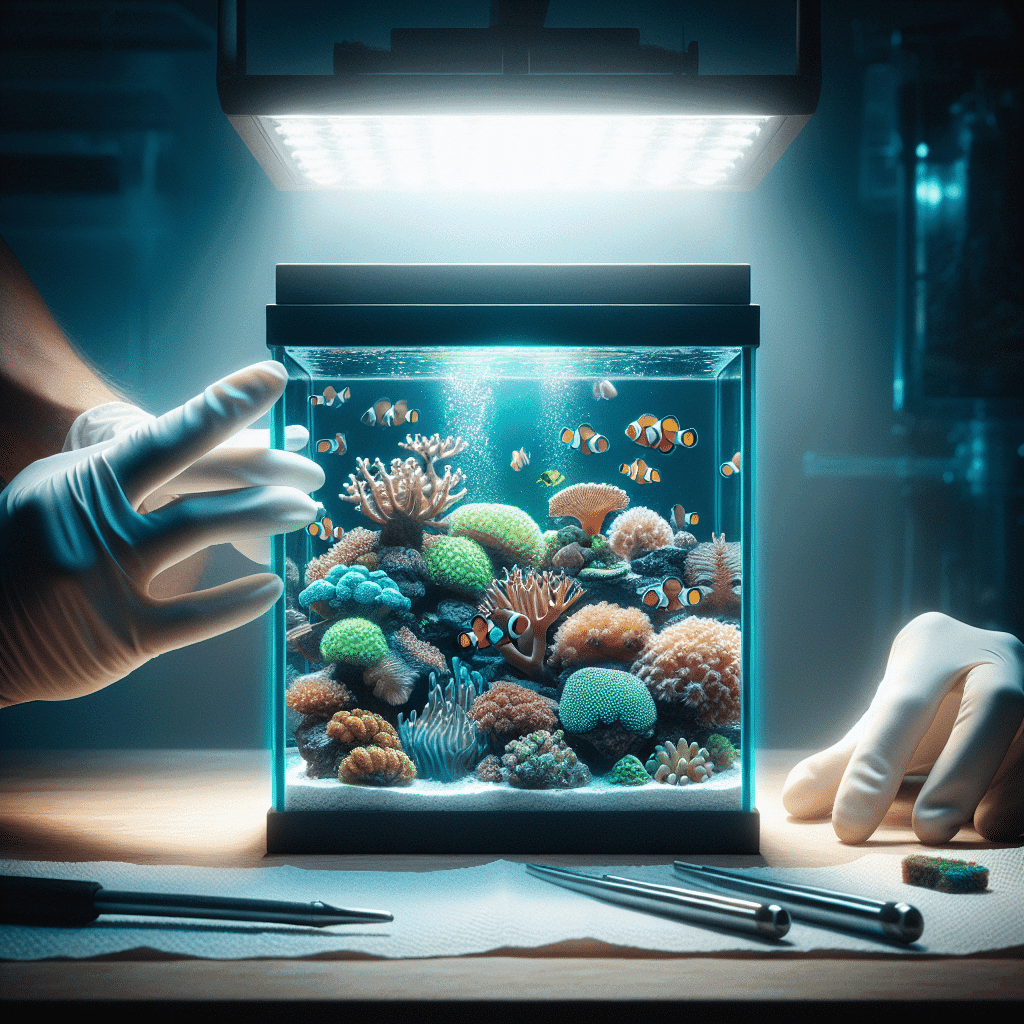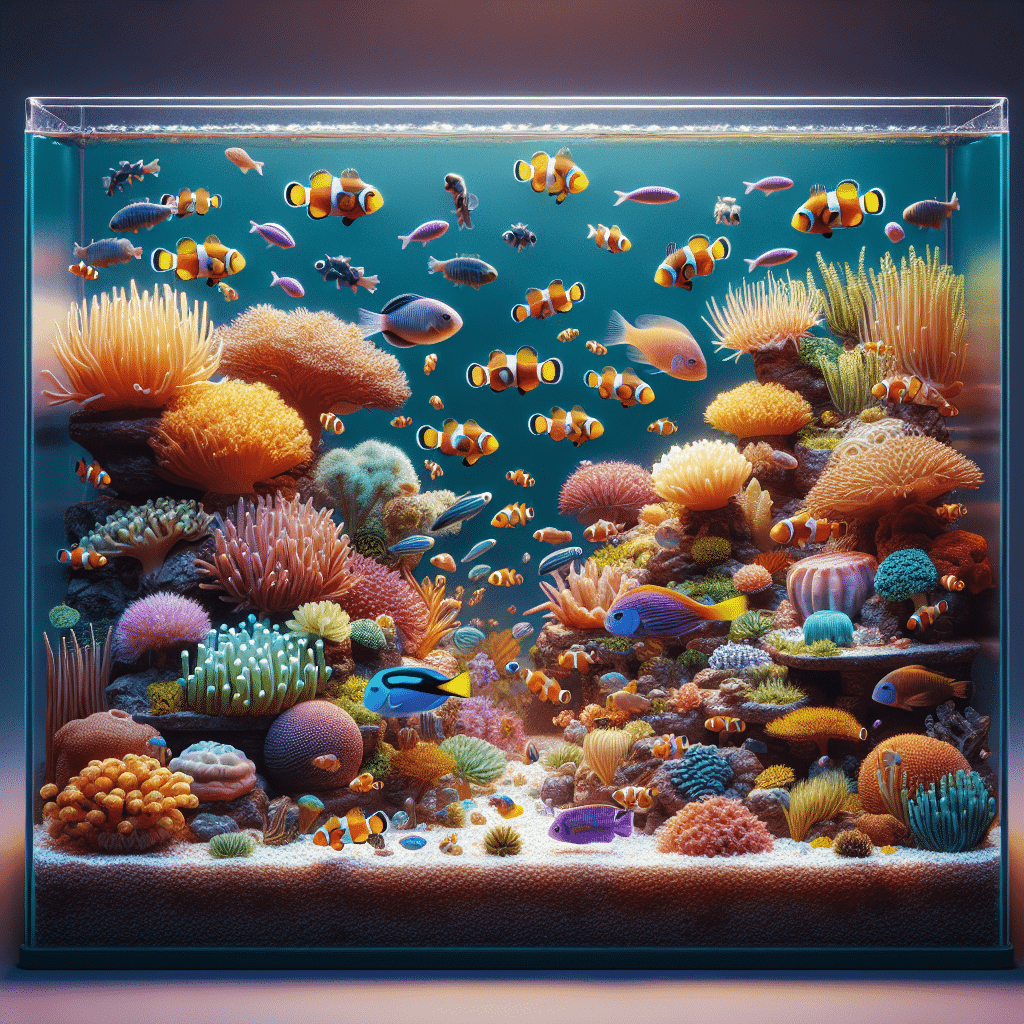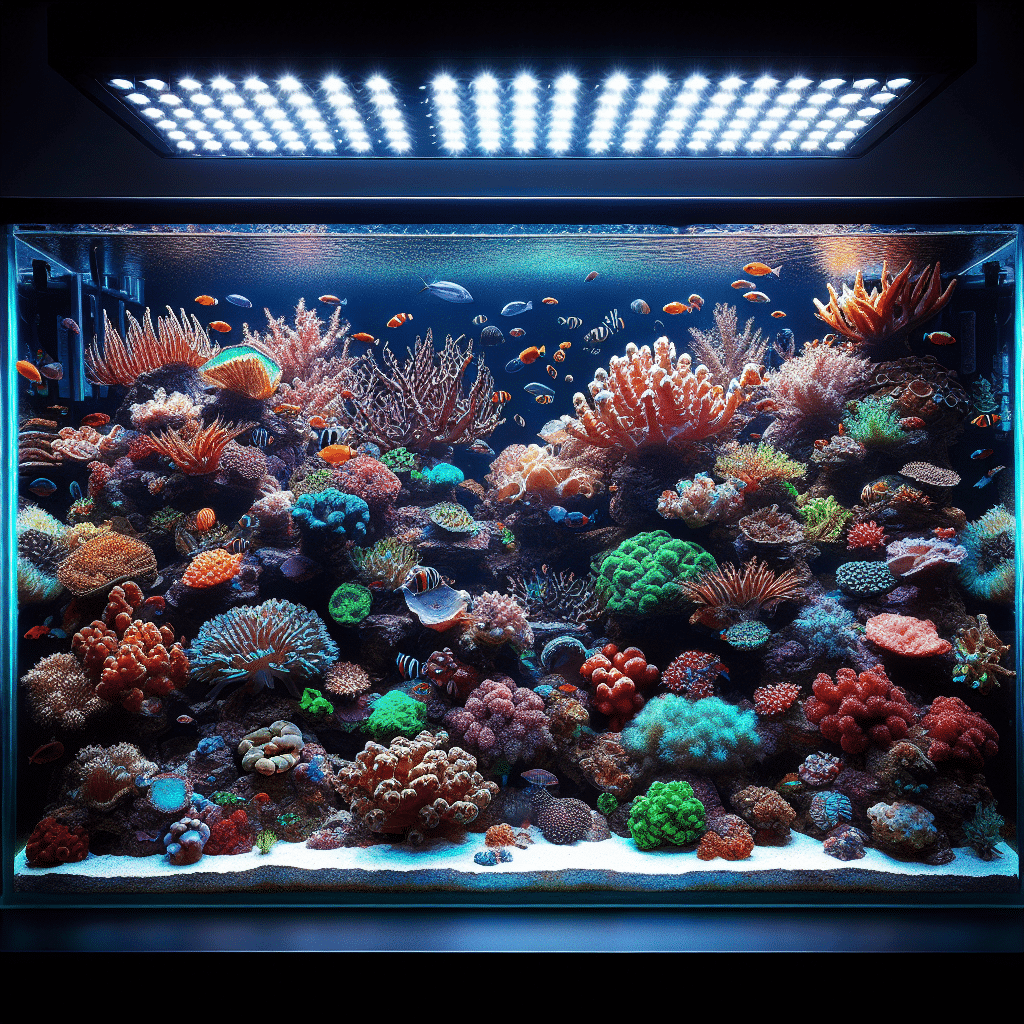Essential Maintenance Tasks
Proper maintenance is crucial for the health and longevity of a nano reef tank. Two key tasks in this regard are regular water changes and consistent water testing.
Water Changes
Regular water changes are essential for maintaining a healthy environment in a nano reef tank. A recommended schedule is to change 10-20% of the water every 1-2 weeks, as this helps to manage waste in the water column and replenish trace elements (Reef2Reef, Nano-Reef).
However, the specific frequency of water changes should be based on the tank’s individual needs. For example, new tanks may require more frequent changes, such as 10% once a week, while established tanks may only need changes every few months to maintain salinity levels (Nano-Reef.com).
| Tank Age | Recommended Water Change Frequency |
|---|---|
| New (0-6 months) | 10% weekly |
| Established (6 months – 2 years) | 10% every 1-2 weeks |
| Long-term (2+ years) | 10% every 1-3 months |
Water Testing Frequency
In addition to water changes, testing the water quality is vital for the overall health of a nano reef tank. Regular testing helps monitor parameters such as pH, ammonia, nitrite, and nitrate levels.
It is generally recommended to test water parameters at least once a week for new setups or recently added livestock. For established tanks, testing frequency can be reduced to once every 2-4 weeks, depending on the stability of the tank’s ecosystem.
| Testing Parameter | Recommended Frequency (New Tank) | Recommended Frequency (Established Tank) |
|---|---|---|
| pH | Weekly | Every 2-4 weeks |
| Ammonia | Weekly | Every 2-4 weeks |
| Nitrite | Weekly | Every 2-4 weeks |
| Nitrate | Weekly | Every 2-4 weeks |
Maintaining a consistent schedule for both water changes and testing is essential for successful nano reef tank maintenance. By staying on top of these tasks, aquarists can create a thriving environment for their fish and corals. For more insights into setting up and maintaining a nano reef tank, explore our articles on best nano reef tank and nano reef tank setup.
Algae Management
Managing algae in a nano reef tank is crucial for maintaining a stable and healthy ecosystem. This section covers strategies for preventing harmful algae, specifically dinoflagellates, and emphasizes the importance of proper algae identification.
Preventing Dinoflagellates
Dinoflagellates, commonly referred to as “dinos,” are a type of algae that can be detrimental to a nano reef tank’s ecosystem. To prevent their growth, it is essential to maintain moderate nutrient levels. Nutrient levels should not be allowed to drop near zero, as this can lead to the starvation of beneficial organisms and the proliferation of harmful pests like dinoflagellates.
The recommended nutrient levels for a healthy nano reef tank are:
| Nutrient | Recommended Level |
|---|---|
| Nitrate | Above 5 ppm |
| Phosphate | Above 0.03 ppm |
Maintaining these levels helps support the overall health of the coral and prevents the outbreak of dinoflagellates. A sterile environment with extremely low nutrient levels can lead to dying corals and an imbalance in the tank ecosystem. For more insights on setting up your tank, check out our guide on nano reef tank setup.
Algae Identification
Proper algae identification is key to maintaining a healthy nano reef tank ecosystem. Understanding the different types of algae present can help in managing their growth effectively. There are various kinds of algae, each with distinct characteristics.
Some common types of algae that may appear in a nano reef tank include:
| Algae Type | Description |
|---|---|
| Green Algae | Often appears as a fine green film, can be beneficial in moderation. |
| Brown Algae | Typically a sign of excess nutrients, often appears as a fuzzy coating. |
| Red Algae | Can be beneficial but may compete with corals for space and nutrients. |
| Dinoflagellates | Can harm corals and are often identified by their slimy texture and brownish color. |
Identifying algae correctly allows the tank owner to implement appropriate control measures, such as adjusting nutrient levels, increasing water flow, or introducing herbivorous fish to manage the algae population. For more information on specific fish suitable for your tank, visit our article on nano reef tank fish.
By being proactive in preventing dinoflagellates and accurately identifying algae types, one can ensure a thriving and balanced nano reef tank ecosystem.
Nutrient Control
Nutrient management is a critical component of nano reef tank maintenance. Maintaining balanced nitrate and phosphate levels supports the health of corals and the overall ecosystem within the tank.
Nitrate and Phosphate Levels
In a nano reef tank, it is essential to keep nutrient levels in check. Nitrate should be maintained above 5 ppm, while phosphate levels should remain above 0.03 ppm. Extremely low nutrient levels can lead to detrimental effects, such as starving corals and encouraging harmful organisms like dinoflagellates (Nano-Reef.com).
| Nutrient Type | Recommended Level |
|---|---|
| Nitrate | > 5 ppm |
| Phosphate | > 0.03 ppm |
Maintaining moderate to high nutrient levels is crucial for sustaining life in the tank. A sterile environment with near-zero nutrients can result in dying corals and an imbalance in the ecosystem. Proper nutrient levels, including adequate alkalinity and magnesium, are also important for promoting coralline algae growth, which contributes to a healthy reef environment (Nano-Reef).
Phosphate Reduction
While it is important to maintain phosphate levels above 0.03 ppm, excessive phosphates can lead to algae blooms that can harm the tank’s ecosystem. Regular water changes and the use of phosphate-absorbing media can help control phosphate levels effectively.
Methods to reduce phosphates include:
- Water Changes: Regularly replacing a portion of the tank water helps dilute phosphate concentrations.
- Phosphate-Absorbing Media: Utilizing media designed to bind phosphates can effectively lower their levels in the water.
- Live Rock and Macroalgae: Incorporating live rock and macroalgae in the tank can compete for phosphates, naturally reducing their levels.
By implementing these strategies, reef tank owners can ensure a balanced nutrient environment that supports coral health and overall tank vitality. For more information about setting up and maintaining a thriving nano reef tank, check out our articles on nano reef tank setup and nano reef tank corals.
Equipment Maintenance
Proper maintenance of equipment in a nano reef tank is essential for ensuring a healthy and thriving aquatic environment. This section covers the care required for pumps and heaters, as well as lighting and filtration systems.
Pump and Heater Care
Maintaining pumps and heaters is crucial for consistent water flow and efficient heating within the nano reef tank. Regular checks and cleaning of these components can prevent malfunctions that could jeopardize the tank’s ecosystem.
Pump Maintenance:
- Inspect pumps monthly for any debris or blockages.
- Clean the impeller and housing to ensure optimal water flow.
- Replace any worn or damaged parts as needed.
Heater Maintenance:
- Regularly check the heater’s functionality and temperature accuracy.
- The ideal temperature range for a nano reef tank is typically between 75-79°F (Reef2Reef).
- Use a reliable thermometer to monitor water temperature effectively.
| Equipment | Maintenance Frequency | Key Tasks |
|---|---|---|
| Pumps | Monthly | Inspect, clean impeller, replace parts |
| Heaters | Monthly | Check functionality, monitor temperature |
Lighting and Filtration Systems
Lighting and filtration systems play a vital role in maintaining water quality and providing the necessary light for corals and other inhabitants.
Lighting Maintenance:
- Ensure that lighting systems are functioning properly and replace bulbs as needed.
- Clean the light fixtures regularly to prevent dust and algae buildup.
- Follow a consistent lighting schedule to mimic natural light conditions.
Filtration Maintenance:
- Regularly clean the filtration system, which may include hang-on-back filters, canister filters, and protein skimmers (Reef2Reef).
- Monitor the bioload of the tank to ensure the filtration system can handle the waste produced.
- Check and replace filter media according to the manufacturer’s recommendations.
| Equipment | Maintenance Frequency | Key Tasks |
|---|---|---|
| Lighting | Monthly | Check functionality, clean fixtures |
| Filtration | Bi-weekly | Clean system, monitor bioload, replace media |
Establishing a routine for maintaining the equipment in a nano reef tank is vital for long-term health. Regular upkeep ensures that all components function efficiently, creating a stable environment for fish and corals. For more information on selecting the right equipment, visit our article on nano reef tank equipment.
Water Quality Management
Maintaining optimal water quality is crucial for the health of a nano reef tank. Regular testing of water parameters such as salinity, pH, ammonia, and nitrite helps ensure a stable environment for fish and corals.
Salinity and pH Testing
Salinity plays a vital role in the overall health of a reef tank. The ideal salinity for a nano reef tank typically ranges from 1.020 to 1.025 specific gravity. Regular testing of salinity is essential to maintain these levels. A reliable hydrometer or refractometer should be used for accurate measurements.
pH is another critical parameter, with the ideal range being between 8.1 and 8.4. Fluctuations outside this range can stress tank inhabitants. pH levels can be tested using pH test kits or digital pH meters.
| Parameter | Ideal Range |
|---|---|
| Salinity | 1.020 – 1.025 SG |
| pH | 8.1 – 8.4 |
Maintaining these levels is essential for the overall success of a nano reef tank. For more information on setting up your tank, refer to our guide on nano reef tank setup.
Ammonia and Nitrite Levels
Ammonia and nitrite levels are critical indicators of water quality in a reef tank. Both ammonia and nitrite should ideally be at 0 ppm (parts per million). Elevated levels of these compounds can be toxic to marine life and must be addressed immediately.
Regular testing for ammonia and nitrite can be performed using liquid test kits or electronic testers. If either parameter is found to be elevated, immediate action should be taken, such as performing water changes or assessing the filtration system.
| Parameter | Ideal Level |
|---|---|
| Ammonia | 0 ppm |
| Nitrite | 0 ppm |
Regular maintenance, including nano reef tank filtration and monitoring of these parameters, ensures a stable and healthy environment for all tank inhabitants. Keeping a consistent maintenance routine will contribute significantly to the success of a nano reef tank.
Advanced Tips for Nano Reef Tanks
Maintaining a thriving nano reef tank requires more than just basic upkeep. Advanced tips can help enhance the health of corals and promote the growth of beneficial organisms like coralline algae.
Coraline Algae Growth
Coralline algae are not only aesthetically pleasing but also contribute to the overall health of a reef tank. The growth of this algae can be influenced by several factors, including nutrient levels, light spectrum, and intensity. To promote coralline algae growth, reef tank owners should focus on maintaining proper water parameters, specifically alkalinity, calcium, and magnesium levels.
| Water Parameter | Optimal Range |
|---|---|
| Alkalinity | 8-12 dKH |
| Calcium | 400-450 ppm |
| Magnesium | 1250-1350 ppm |
By ensuring that these parameters are maintained within the optimal range, reef tank enthusiasts can create suitable conditions for coralline algae to thrive. Additionally, adjusting the light spectrum and intensity to favor the growth of coralline algae can yield positive results. Some reef tank owners have found success by experimenting with different lighting setups, as the presence or absence of coralline algae can vary based on individual conditions. For more insights on lighting, refer to our article on nano reef tank lighting.
Promoting Coral Health
Maintaining the health of corals is essential for a thriving nano reef tank. Proper nutrient levels, along with adequate water quality management, play a critical role in coral vitality. Key factors to consider include:
Nutrient Levels: Regular testing for nitrates, phosphates, and other essential nutrients can help ensure corals receive the necessary elements for growth. Keeping nitrate levels below 5 ppm and phosphate levels below 0.03 ppm is recommended for optimal coral health.
Water Parameters: Monitoring salinity, pH, and temperature is crucial. The ideal salinity for most reef tanks is 1.024-1.026, with a pH range of 8.1-8.4 and a temperature of 75-80°F.
| Coral Health Factor | Optimal Range |
|---|---|
| Nitrate | < 5 ppm |
| Phosphate | < 0.03 ppm |
| Salinity | 1.024 – 1.026 |
| pH | 8.1 – 8.4 |
| Temperature | 75 – 80°F |
By maintaining these parameters, reef tank owners can create an environment that supports coral growth and resilience. Regular water testing and adjustments are crucial components of nano reef tank maintenance. For additional resources on coral species suitable for nano reef tanks, check our article on nano reef tank corals.
Incorporating these advanced tips into the maintenance routine can lead to a more vibrant and healthy nano reef tank, enhancing both the visual appeal and ecosystem stability.



